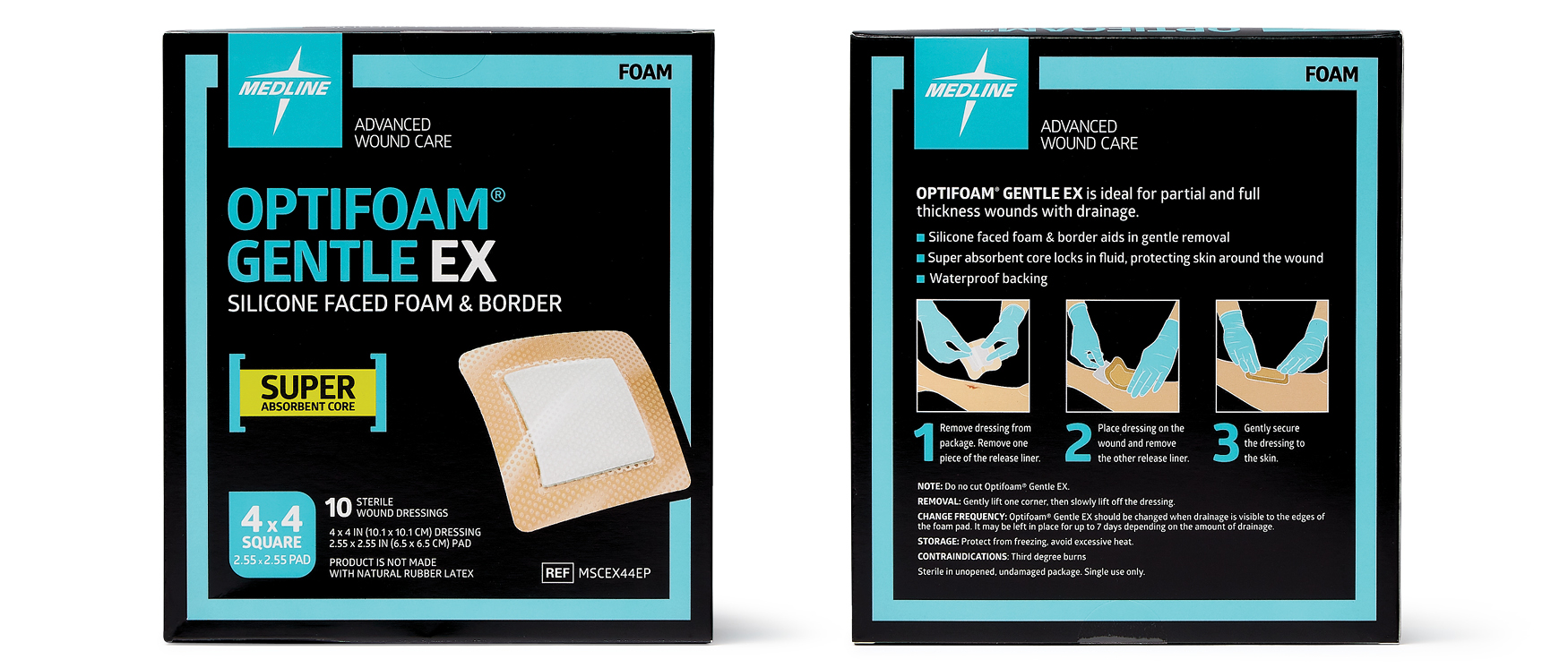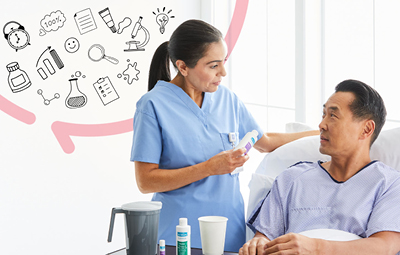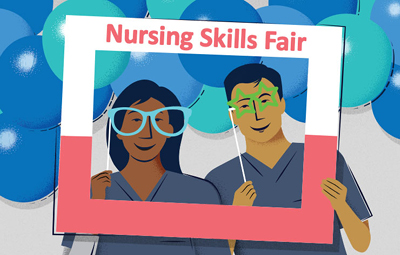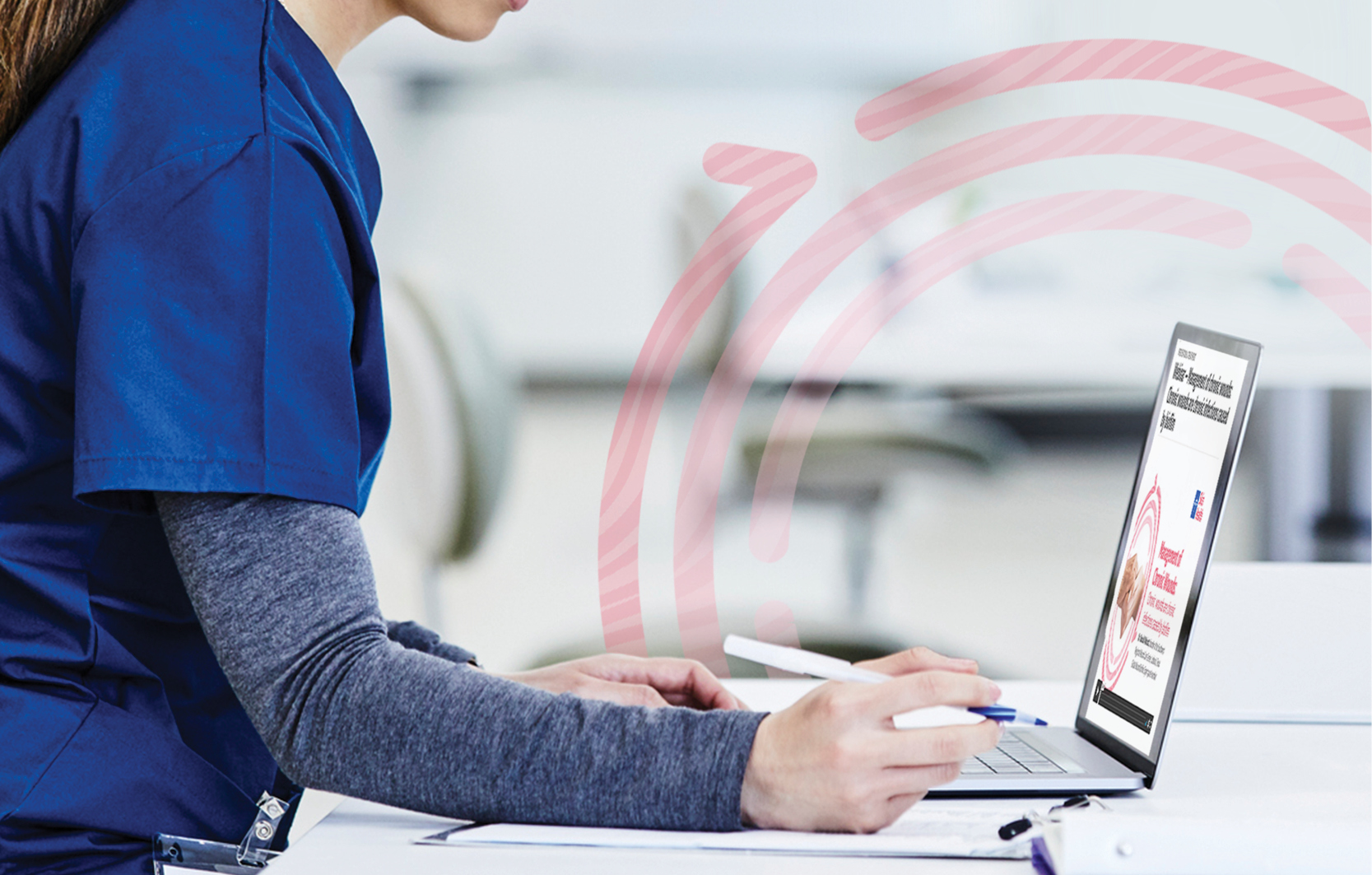Make wound dressing change easier with educational packaging
Award-winning design helps save nursing time and improve patient outcomes.
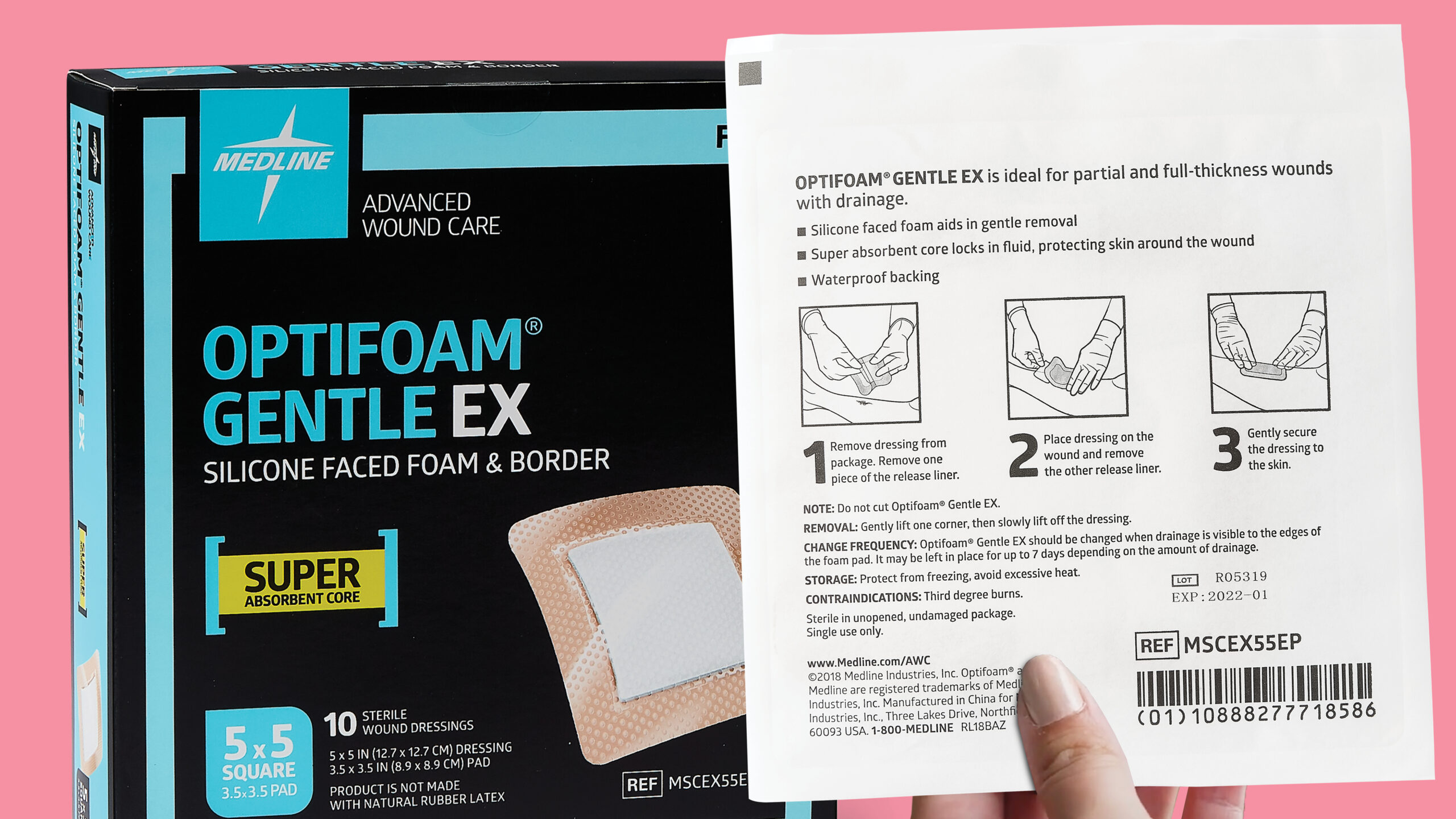
Thoughtfully designed educational packaging helps nurses with wound dressing changes. Good design on advanced wound care packages can save time, reduce waste and improve patient outcomes.
“I could see hours taken off my day of doing little things at the bedside with the bedside nurse because of the packaging.”
Bette Kussman
RN, CWON, burn nurse at Tulane Medical Center, New Orleans, La.
What is educational packaging?
While everything from microwavable meals to hand cream comes with how-to directions, when it comes to wound care dressings, words aren’t always enough. In the past, most instructions on wound care dressing packages were at best skimmed, at worst, totally ignored. Not surprising, considering the small print and complex language.
In contrast, educational packaging looks at instructions from a user’s point of view: It’s clear and simple, leading to the right product choice and treatment for your patients.
4 ways educational packaging makes your job easier
With numerous patients, you run in a thousand directions. When frontline nurses can apply foam dressings and other wound care dressings with minimal assistance, you can focus on other priorities. Medline’s award-winning educational packaging helps give them the confidence to get it right. Here’s how:
- On the front of the package in large print, nurses will find the name of the dressing, what it’s used for, its features and how often the dressing needs to be changed.
- Color-coded packaging assists in quickly organizing, storing and identifying the right wound care dressing.
- The back of the package features clear illustrations to demonstrate how to correctly apply the dressing. These simple visuals add to comprehension, boost nurse confidence and increase positive results. “What I love about illustrations is that you can take very complex information and simplify it to make the point—and it completely changes what a person can understand,” says Margaret Halstead, Medline’s VP Health Economics & Market Access.
- Even if the outer box is tossed, each individual pouch contains all the important info, including contraindications. “In that package, whether it’s the outer box or the inner pouch, you have everything you need to take care of that patient and to know how to apply that dressing,” says Sue MacInnes, Medline’s Chief Market Solutions Officer.
“They’re going to have everything they need, whether it’s in the box or an individual packet, it will be there.”
Lynne Grant
MS, RN, CWON, Clinical Nurse II at Stanford Health Care, El Granada, Calif.
Educational packaging drives patient adherence
What happens after your patients go home with their wound care instructions? They often call you with questions. “A lot of times, patients and families are overwhelmed by all the teaching you’re doing in a clinic setting and, because of that, they forget half of what they tell you,” says Lynne Grant, MS, RN, CWON, Clinical Nurse II at Stanford Health Care, El Granada, California. Educational packaging helps cut down on these calls and increase patient adherence to treatment.
Patients come from a variety of cultural and economic backgrounds, so educational packaging helps by providing straight-forward answers right on the package. “Our thought process is how to ensure and enable patients to be adherent in using products prescribed, and that starts with thoughtful design,” Halstead notes.
Thoughtful design equals better understanding, equals better patient compliance. For example, a compression stocking can be tricky and uncomfortable even for the healthiest among us. Consider a patient with venous stasis disease: They’re typically elderly, and if they’re non-English speaking or coping with multiple health issues, it’s even tougher for them to adhere to their treatment. Chances are, if they apply the compression garment incorrectly the first time, they may not try again.
“So, now, the simplest, most cost-effective way to treat [their] venous problem is the one [they] cannot do or adhere to,” Halstead says. Educational packaging, with its clear-cut language and visual instructions, helps your patients adhere to their treatment—and hopefully get better results.
The story behind the design
Back in 2005, the retail store Target introduced clever new packaging for its prescription drug bottles. The brains behind the design was Deborah Adler, a young designer who originated the idea as her graduate school thesis project. Adler’s work received rave reviews. Glamour magazine named her one of its “24 women who could change your life,” and Chief Market Solutions Officer at Medline Industries, Sue MacInnes, happened to read that article. She called Adler to talk about redesigning the company’s wound care packaging.
“It was important in the package redesign not to just make it pretty, but to create a function for that package.”

Sue MacInnes
Medline’s Chief Market Solutions Officer
Adler’s first step was to put herself into the mindset of wound care nurses, meeting with them directly and observing how they stored and used the dressings. Adler then assessed the current packaging design, identifying areas for improvement. One of her suggestions was color coding the different types of wound care dressings. Another was adding simple visual instruction to help both nurses and patients apply dressings correctly—and consistently. “Every word, every picture has a reason for being there,” MacInnes said. When Medline’s new packaging debuted in 2007, MacInnes described it as “a 2-minute course on advanced wound care.”
Fun Fact: Deborah Adler’s Target ClearRx prescription bottle designs are included in an exhibit at the Museum of Modern Art in New York.1
The study that proved the point
When Dea Kent, MSN, RN, NP-C, CWOCN, Director of Risk Management at Community Health Network in Sharpsville, Indiana, heard about Medline’s newly designed wound care dressing packages, she wondered if the benefits played out in practice. To find out, she conducted a randomized study2 with bedside nurses of varying education levels who worked on a model using either traditional dressing packages or the educational packages.
The results were undeniable: “We found there was a hugely significant difference between educational packaging and no educational packaging,” Kent says.
- 0 nurses with traditional packaging were able to apply the dressing correctly. Some failed to trim the dressing properly, others didn’t remove the carrier sheet; all overpacked the wound.
- 88% of nurses with educational packaging were able to apply the dressing correctly.
The nurses with the educational packaging also reported feeling more confident in their abilities, “which means the outcomes for the patient were going to go up,” Kent says. “We don’t have WOCN nurses in every setting everywhere, so if we can give nurses something in their hands to make them feel empowered and do something correctly, that’s going to be really good for patient care across the board.”
Key takeaway
Educational packaging makes wound dressing changes easier and increases patient adherence to treatment. Research shows that nurses are more successful at applying the dressing and feel more confident when they have visual instruction. This kind of design innovation helps improve patient outcomes and save clinician time.
References:
- Deborah Adler Design | Press. (n.d.). Manyfold. https://adlerdesign.com/press/
- “Effects of a Just-in-Time Educational Intervention Placed on Wound Dressing Packages: A Multicenter Randomized Controlled Trial,” Kent, Dea J. MSN, RN, NP-C, CWOCN, Journal of Wound, Ostomy and Continence Nursing: November/December 2010 – Volume 37 – Issue 6- p 609–614
